Are you experiencing vision issues?
Eye diseases can worsen silently, becoming serious before symptoms are noticeable. At Vision Source, we focus on early detection and management of conditions like glaucoma, macular degeneration, and diabetic retinopathy. Equipped with the latest technology, our eye clinics in Seguin and San Marcos enhance your chances for effective treatment and sustained vision. Don’t wait — early detection is crucial.
Trained optometrists offering caring eye disease management
Understanding the urgency of eye health, our optometrists at Vision Source eye clinics can provide immediate and thorough eye care. From treating sudden injuries to managing chronic conditions, we use advanced diagnostic tools and bring experienced care to each case. Our goal? To alleviate discomfort, prevent deterioration, and preserve your sight with comprehensive, empathetic treatments.
- Glaucoma: Protecting your sight against this “silent thief of vision”.
- Macular Degeneration: Slowing progression with the latest treatments.
- Diabetic Retinopathy: Monitoring and managing diabetic eye complications.
- Cataracts: Clearing the way for better vision with advanced removal techniques.
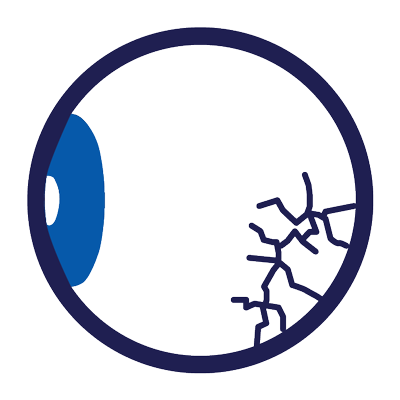
What does treatment for eye diseases include?
Our treatment plans for eye diseases are as diverse as the conditions we address, including:
- Medication Management: The latest pharmaceuticals to control symptoms and stop disease progression.
- Laser Therapy: Precise laser treatments to correct physical changes in the eye.
- Surgical Interventions: Advanced surgical options to restore or maintain vision.
- Regular Monitoring: Ongoing assessments to adapt treatment plans as needed for the best outcomes.
Let’s fight eye disease, together.
Get comprehensive care for serious eye diseases with our state-of-the-art treatments and compassionate service.
Macular Degeneration (AMD)
Age-related Macular Degeneration (AMD) is the primary cause of vision impairment in individuals over 50, impacting the macula — the central section of the retina that controls detailed vision. Essential for activities like reading, driving, and recognizing faces, the health of the macula is crucial.
At Vision Source, we’re proactive in detecting AMD with thorough eye exams that can reveal the disease before symptoms arise. Once diagnosed, we implement strategies that may include lifestyle changes, medications, and advanced therapies to slow the disease’s progression and help maintain quality of vision.
Our goal is to prolong your independence in daily activities by managing this condition effectively.
Macular Degeneration (AMD) diagram
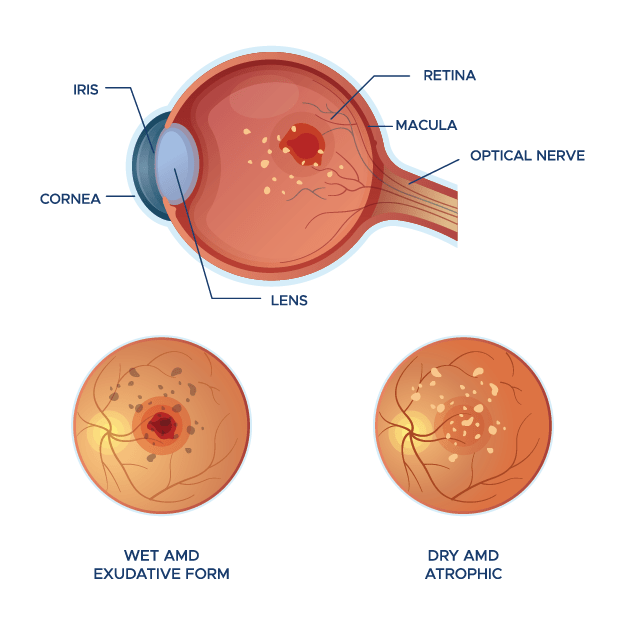
Glaucoma
Glaucoma, often undetected until it causes significant vision loss, is a progressive eye condition that damages the optic nerve, essential for good vision. This damage is typically caused by abnormally high pressure in your eye.
At Vision Source, we use the latest diagnostic tools to identify glaucoma early on, when it’s most manageable. Treatment options include prescription eye drops, laser procedures, or surgical solutions to reduce intraocular pressure and prevent further damage to the optic nerve.
Our comprehensive care aims to preserve as much vision as possible and prevent the progression of the disease, providing ongoing assessments and adjustments to treatment as needed.
Glaucoma diagram
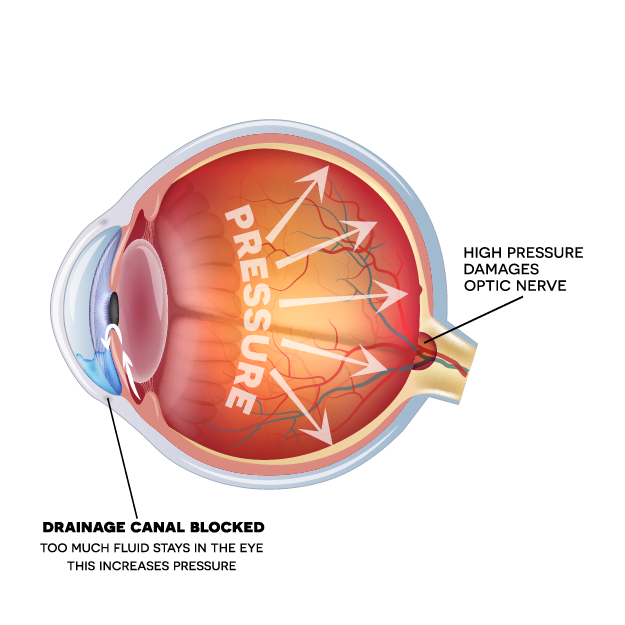
Diabetic Retinopathy
Diabetic Retinopathy arises from damage to the blood vessels in the retina caused by complications of diabetes. It’s the leading cause of blindness in American adults and is particularly dangerous because it can progress unnoticed until it affects vision.
Early detection through regular eye exams at Vision Source is vital for managing this condition effectively. Our optometrists will use advanced imaging technologies to monitor the health of your retina and identify signs of disease early.
Treatment strategies may include blood sugar control, prescription medication, laser treatments, or surgery to prevent progression and preserve vision. Our approach helps mitigate the impact of diabetic retinopathy, supporting your overall eye health and vision.
Diabetic Retinopathy diagram
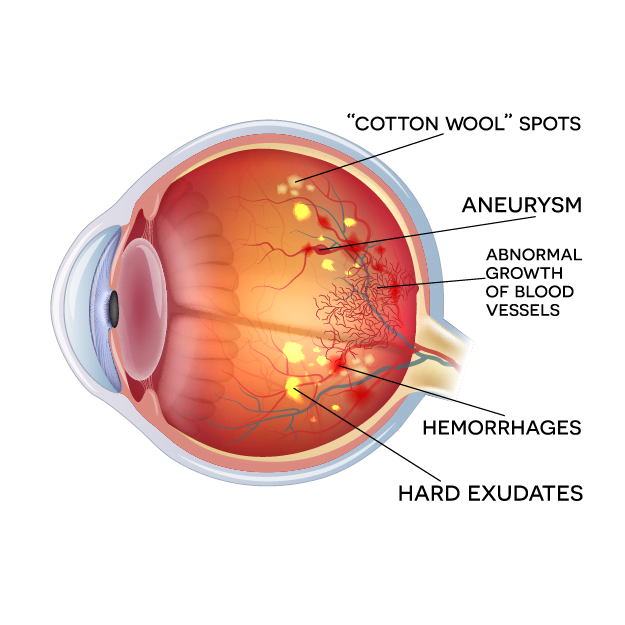
Cataracts
Cataracts develop when the eye’s natural lens becomes clouded, a common issue among older adults that can significantly impair vision. Symptoms typically include blurred vision, difficulty with glare, and a dulling of colors.
At Vision Source, our approach to cataract treatment starts with a comprehensive eye exam to diagnose the condition and evaluate its severity. If surgery is needed, we refer you to skilled surgeons to perform a procedure to remove the clouded lens and replace it with a clear, artificial lens, restoring clarity and greatly improving quality of life.
Our team provides full support through the recovery process, ensuring that each patient achieves the best possible outcome with enhanced visual acuity.
Cataract diagram
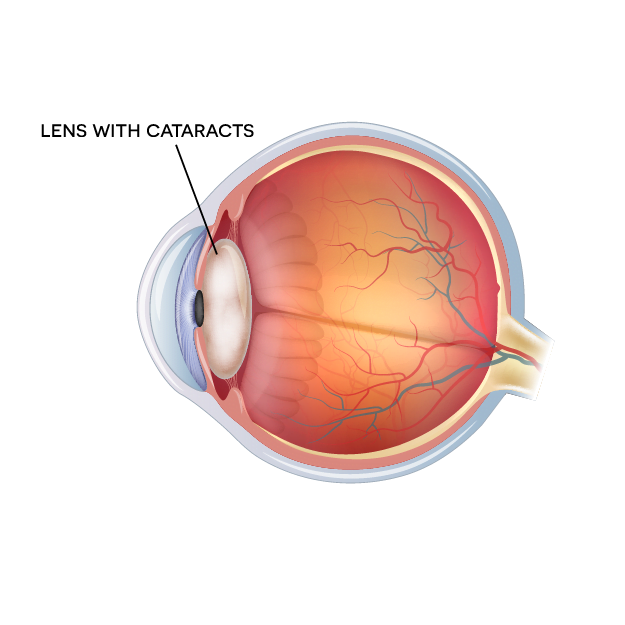
Why choose Vision Source for eye disease treatment?
Early detection
Using cutting-edge diagnostic tools, we identify eye diseases at their earliest stages when treatment is most effective.
Expert care
Our experienced optometrist uses the latest techniques and tools to provide expert care in emergency situations.
Advanced treatment options
We provide access to the latest treatments, including medications, laser therapy, and surgical procedures, to ensure the best care possible.
Seamless referrals
If specialized care is needed, we seamlessly coordinate with leading ophthalmologists to deliver comprehensive treatment.

faqs
Empowering you with information is part of our job. Here are answers to some common questions about eye disease treatments at Vision Source.
General
A comprehensive eye exam includes tests for visual acuity, intraocular pressure (tonometry), and detailed scans of the retina and optic nerve. These exams are critical for detecting eye diseases in their earliest and most treatable stages
Symptoms can include blurred vision, vision loss, eye pain, double vision, redness, and excessive tearing. Regular exams are crucial, as many eye diseases don’t cause early symptoms.
Adults should have comprehensive eye exams every 1-2 years, depending on age, risk factors, and overall health. More frequent monitoring may be necessary for those with high risk or existing conditions.
Yes, depending on the condition, lifestyle adjustments such as better blood sugar control, smoking cessation, and protective eyewear can significantly impact disease progression.
Simply schedule an appointment at our Seguin or San Marcos TX eye clinic locations. We’ll guide you through a comprehensive evaluation and discuss the best treatment options for your condition.
Macular Degeneration (AMD)
AMD, or Age-related Macular Degeneration, is a condition that impacts the macula, the part of the retina responsible for clear central vision. It can lead to significant vision loss, particularly affecting the ability to see fine details.
Yes, there are two types of AMD: Dry and Wet. Dry AMD is more common and involves the gradual buildup of deposits under the retina. Wet AMD is less common but more severe, involving leaking blood vessels that damage the macula.
Individuals over 50 should have annual eye exams to check for AMD. Earlier or more frequent exams may be necessary if you have risk factors like a family history of the disease.
While AMD is not entirely preventable, lifestyle changes such as quitting smoking, maintaining a healthy diet rich in leafy greens and fish, and managing blood pressure can help slow its progression.
Treatment options for AMD depend on the type. For Dry AMD, certain vitamins and minerals can slow progression. Wet AMD may be treated with VEGF inhibitors, which help reduce the growth of abnormal blood vessels in the retina.
Glaucoma
Glaucoma is a group of eye diseases that damage the optic nerve, often due to high intraocular pressure. It’s detected through comprehensive eye exams, including tonometry (to measure eye pressure), visual field tests, and optic nerve imaging.
In its early stages, glaucoma typically has no symptoms. As it progresses, it may cause peripheral vision loss, eye pain, halos around lights, and eventually, central vision loss.
Risk factors for glaucoma include age (over 40), a family history of the condition, certain ethnic backgrounds (African American, Hispanic), and conditions like diabetes or high blood pressure.
Treatment options include prescription eye drops, oral medications, laser treatments, or surgery to lower eye pressure and prevent further damage to the optic nerve.
While there is no cure for glaucoma, early detection and consistent treatment can manage symptoms and slow or prevent progression of vision loss.
Diabetic Retinopathy
Diabetic retinopathy is a complication of diabetes that affects the eyes, caused by damage to the blood vessels of the light-sensitive tissue at the back of the eye (retina). Anyone with Type 1 or Type 2 diabetes is at risk, especially those with poor blood sugar control, high blood pressure, high cholesterol, and smokers.
Early stages often have no symptoms. As the condition progresses, symptoms may include blurred vision, floaters, dark areas of vision, and difficulty perceiving colors.
Managing diabetes with proper diet, exercise, and medication, along with regular comprehensive eye exams, is key to preventing diabetic retinopathy or catching it in its early stages.
Treatment options depend on the severity of the condition and may include laser surgery, anti-VEGF injections to reduce swelling and slow leakage, or vitrectomy to remove blood from the vitreous of the eye.
Individuals with diabetes should have an annual comprehensive eye exam to check for early signs of retinal damage. More frequent exams may be necessary if signs of retinopathy are found.
Cataracts
Cataracts are detected during a comprehensive eye exam that includes a visual acuity test and a dilated eye exam. Our optometrists examine the clarity of your lens and your ability to see colors and deal with glare.
Signs that you might need cataract surgery include progressively worsening vision, trouble reading or driving, difficulty seeing at night, and seeing halos around lights. If these issues significantly impair your daily activities, surgery may be recommended.
Cataract surgery is a safe, generally quick procedure, typically completed within an hour. Under local anesthesia, the clouded lens is removed and replaced with a clear, artificial lens. Recovery time is minimal, with most patients experiencing improved vision soon after.
Most patients notice improved vision within a few days post-surgery, although complete healing might take several weeks. It’s important to follow post-surgery care instructions, including using prescribed eye drops to prevent infection and inflammation.
Cataracts themselves do not return after surgery; however, some patients may experience a clouding of the part of the lens capsule that remains post-surgery, known as posterior capsule opacification. This condition is treatable with a simple laser procedure.



